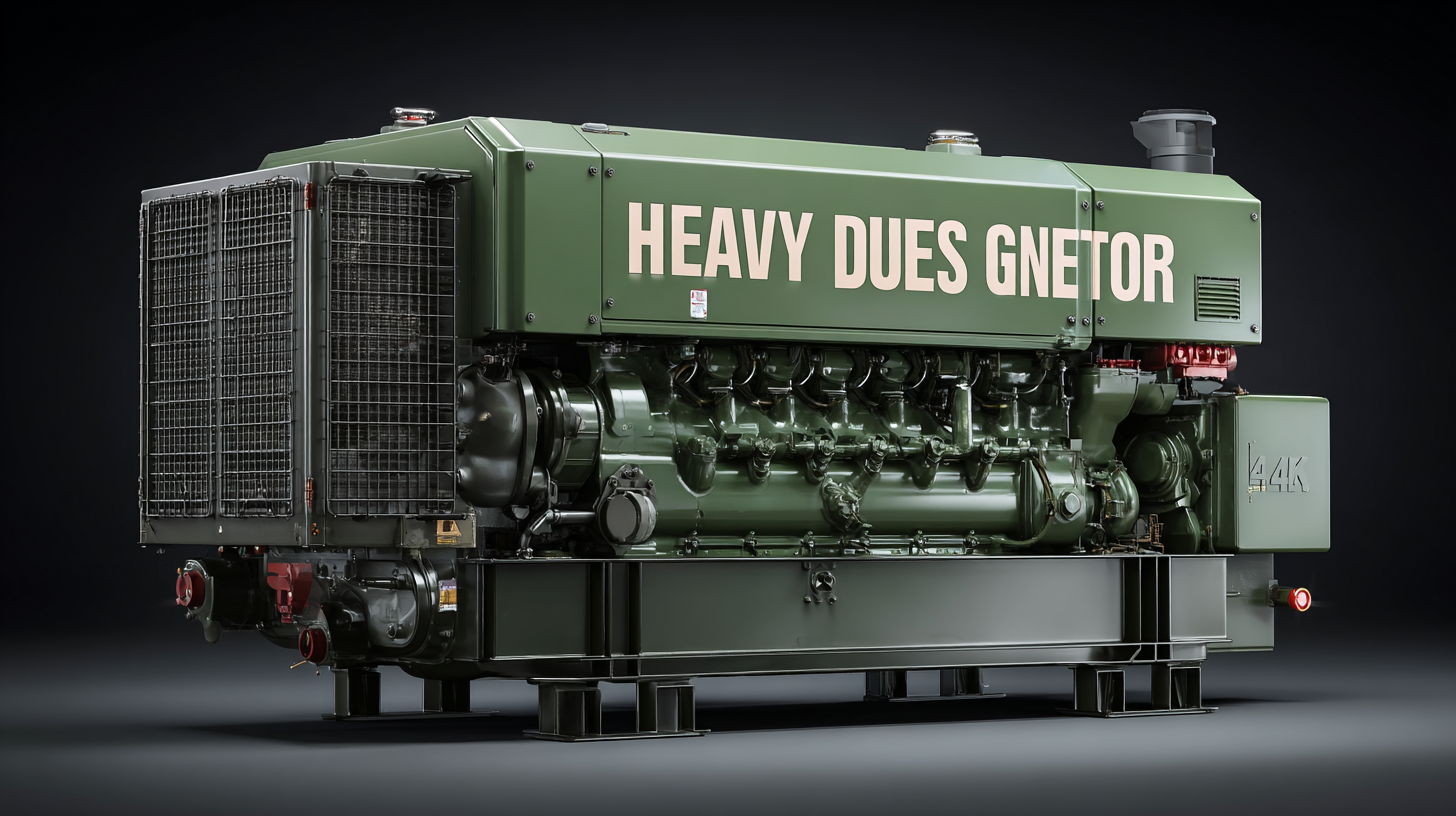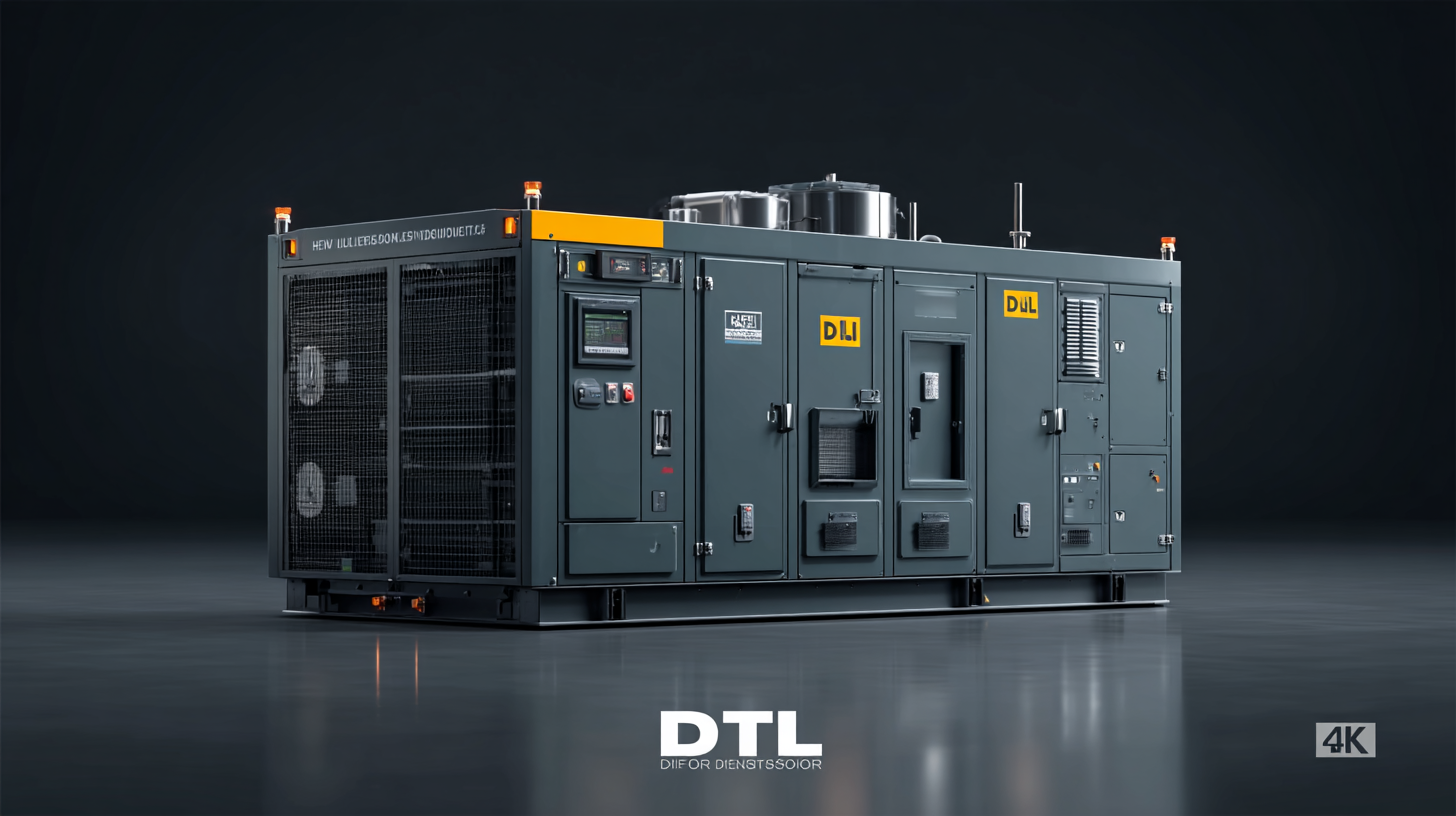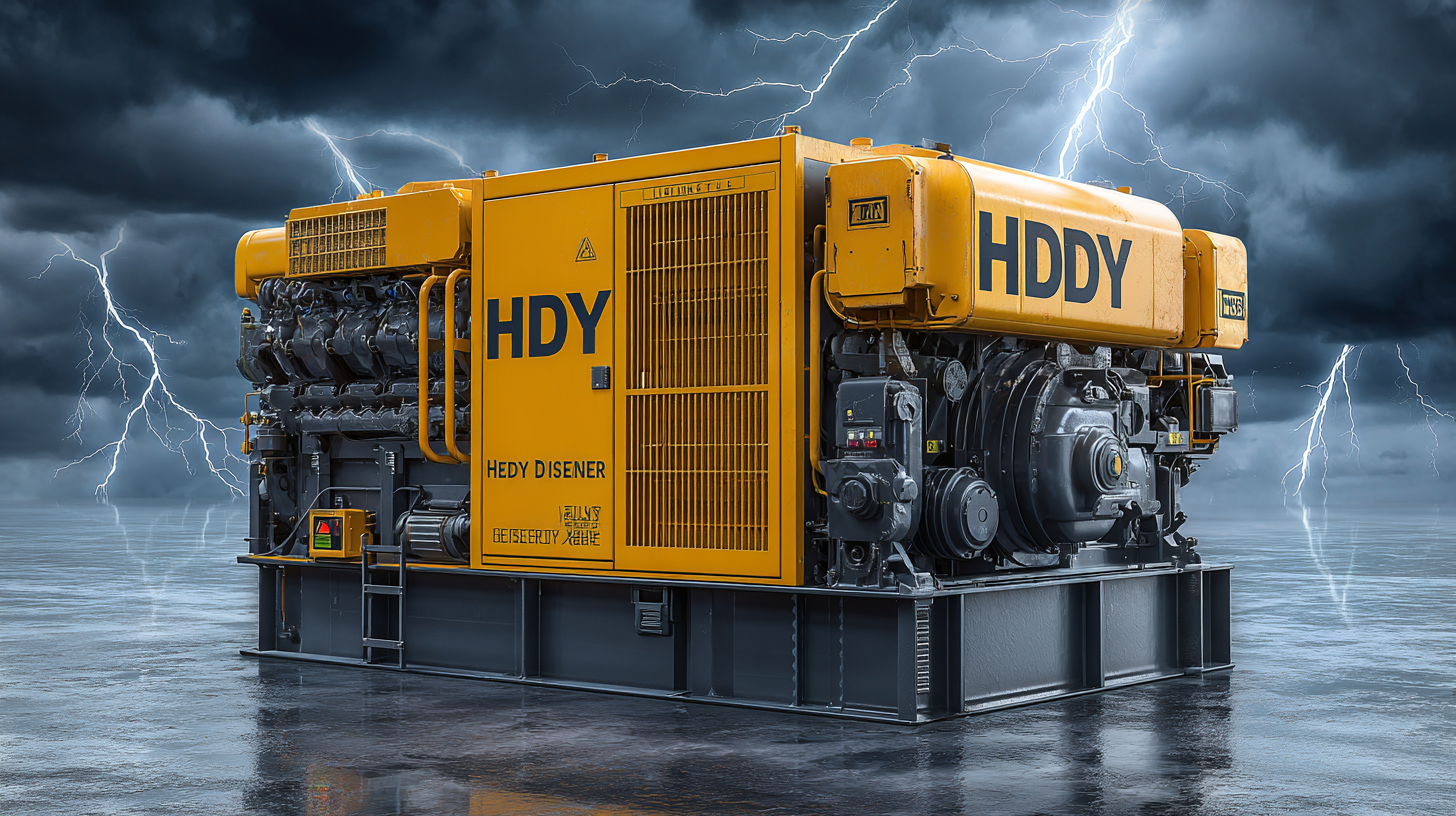
-
Home
-
Products
-
Service
-
About Us
-
Solution
-
Videos
-
News
-
Contact Us
Leave Your Message

The growing demand for reliable and efficient power solutions has led to significant scrutiny of traditional Heavy Duty Diesel Generators (HDDGs), which have long been the backbone of industrial power supply. According to the International Energy Agency (IEA), global diesel generator sales are projected to reach $20 billion by 2025, highlighting their prevalence in various sectors. However, as concerns about environmental impact and operational costs continue to rise, many industries are seeking alternative solutions that offer a balance between sustainability and reliability.

Reports from the U.S. Department of Energy indicate that alternatives such as cleaner natural gas generators, battery energy storage systems, and renewable energy technologies are increasingly being adopted, presenting a viable path forward. This blog will explore these alternatives, providing a comprehensive checklist to help businesses transition from Heavy Duty Diesel Generators to more sustainable and reliable power options.
As the demand for reliable power solutions increases, the shift from heavy-duty diesel generators to renewable energy sources becomes more pronounced. Diesel generators, while dependable, contribute significantly to air pollution and greenhouse gas emissions. In contrast, renewable energy options—such as solar, wind, and hydroelectric power—offer clean alternatives that not only reduce carbon footprints but also enhance energy security.
Choosing renewable energy sources provides numerous advantages, including lower operational costs and sustainability. Solar panels and wind turbines harness natural resources that are abundant and free, resulting in minimal ongoing expenses after initial setup. Furthermore, advances in technology have made renewable systems more efficient and accessible, enabling even small-scale users to benefit from reliable power generation. The long-term benefits of transitioning to renewable energy far outweigh the temporary convenience of diesel generators, marking a pivotal step towards a cleaner, more sustainable future.
| Energy Source | Output Power (kW) | Fuel Cost ($/kWh) | Installation Cost ($) | Maintenance Cost ($/year) | Environmental Impact |
|---|---|---|---|---|---|
| Solar Power | 1 - 10 | 0.05 | 5,000 - 25,000 | 200 | Low |
| Wind Power | 5 - 50 | 0.06 | 15,000 - 50,000 | 300 | Low |
| Hydro Power | 10 - 100 | 0.03 | 50,000 - 200,000 | 500 | Minimal |
| Biomass | 10 - 20 | 0.07 | 30,000 - 70,000 | 400 | Moderate |
| Geothermal | 10 - 30 | 0.04 | 40,000 - 100,000 | 350 | Low |
The shift toward innovative battery technologies as reliable power solutions is gaining momentum, especially with breakthroughs like the
zinc-iodine battery, which maintains an impressive
99.8% capacity after 500 charge cycles. This advancement signifies a crucial step in enhancing sustainability within energy systems, potentially transforming the landscape of energy storage and consumption.
As energy storage plays a pivotal role in renewable energy integration, innovations in this field are essential for countries like
India, which strives to scale its clean energy initiatives amidst rising energy demands.
Tips: Consider leveraging energy storage systems in your business model to improve sustainability and reliability. Researching local regulations on renewable energy deployment can also provide advantages in planning for the future.
Additionally, the ongoing developments in battery technology, including the emerging thermal energy storage methodologies, suggest that industries can significantly benefit from these innovations.
With the commitment to transforming how we store and utilize energy, this sector is poised for exponential growth, aligning with global
decarbonization goals. As such, companies and individuals alike should stay informed about these technological advances to capitalize on the clean energy transition effectively.
Natural gas generators are gaining prominence in modern energy systems due to their efficiency and reduced environmental impact. According to the U.S. Energy Information Administration, natural gas accounted for nearly 40% of the total electricity generation in 2022, emphasizing its growing role in meeting energy demands. These generators produce fewer emissions compared to traditional diesel units, making them a cleaner option, which aligns with global efforts to reduce carbon footprints and combat climate change.
When considering alternatives to heavy-duty diesel generators, natural gas systems not only provide a reliable power source but also offer flexibility. They can be easily integrated into existing energy infrastructure, provide rapid response to load changes, and can support renewable energy sources like wind and solar by balancing intermittency.
**Tip:** When evaluating natural gas generators, consider their efficiency ratings and emissions profiles to ensure they align with your environmental goals.
In addition, understanding the operational costs of natural gas versus diesel can significantly impact your decision. The International Energy Agency reported that natural gas prices can often be more stable than diesel fuel, providing potential savings and predictability in operational budgets.
**Tip:** Always check the local availability of natural gas and infrastructure support, to ensure seamless integration and operation for your power solutions.

In today's quest for sustainable energy solutions, hybrid systems have emerged as a promising alternative to traditional heavy-duty diesel generators. By integrating renewable energy sources like solar and wind with conventional power systems, these hybrid setups not only enhance efficiency but also significantly reduce carbon emissions. The synergy created by combining these technologies allows for a more stable energy supply, making them particularly attractive for industries seeking reliable power without compromising environmental goals.

Furthermore, hybrid systems offer the flexibility to scale power generation according to demand. This adjustability means that users can minimize waste and optimize energy usage, leading to reduced operational costs. Additionally, with advancements in battery storage technology, excess energy generated during peak sunlight or wind periods can be stored and utilized later, ensuring continuous power supply. As industries move towards greener practices, exploring hybrid systems becomes essential for achieving a balanced approach to energy consumption that prioritizes both reliability and eco-friendliness.
In today's dynamic energy landscape, effective load management plays a pivotal role in ensuring power reliability, particularly in the context of integrating distributed generation (DG) systems. As more renewable energy sources are brought online, the need for precise load forecasting and flexible load management strategies becomes paramount. By understanding the operational principles and characteristics of various DG technologies, power systems can optimize performance and resiliency. This shift not only enhances reliability but also mitigates the challenges posed by decentralized energy resources.
Moreover, the integration of electric vehicles (EVs) into smart grids is a significant aspect of modern load management. As the demand for EV charging stations increases, optimizing their integration becomes critical to maintaining grid stability. Utilizing algorithms designed to optimize energy management can lead to improved load distribution, thereby reducing the susceptibility of the grid to outages. Studies have shown that effective energy management strategies in microgrids, particularly those employing renewable energy sources, significantly enhance resilience against resource interruptions, ultimately ensuring a more reliable power supply for consumers.